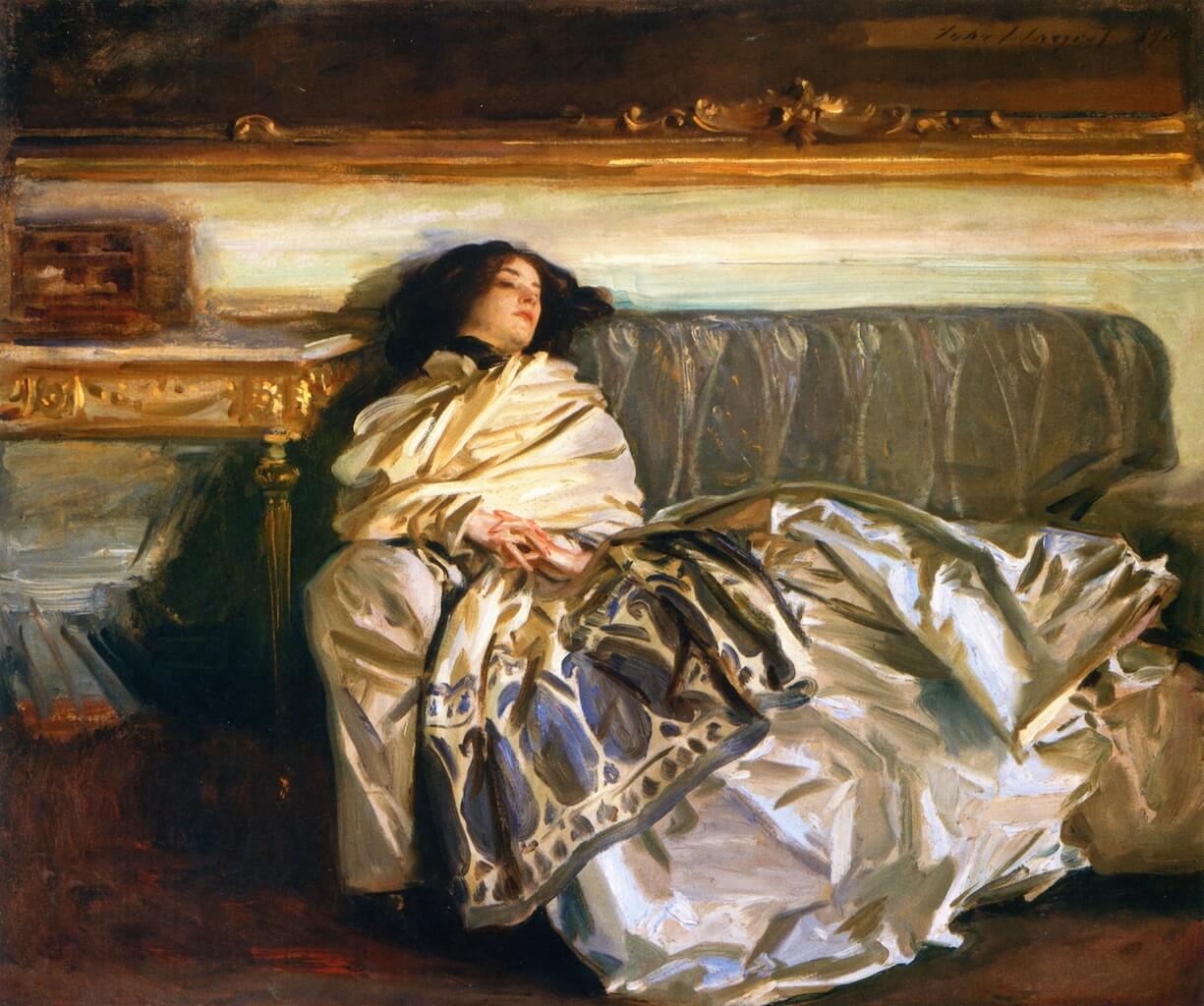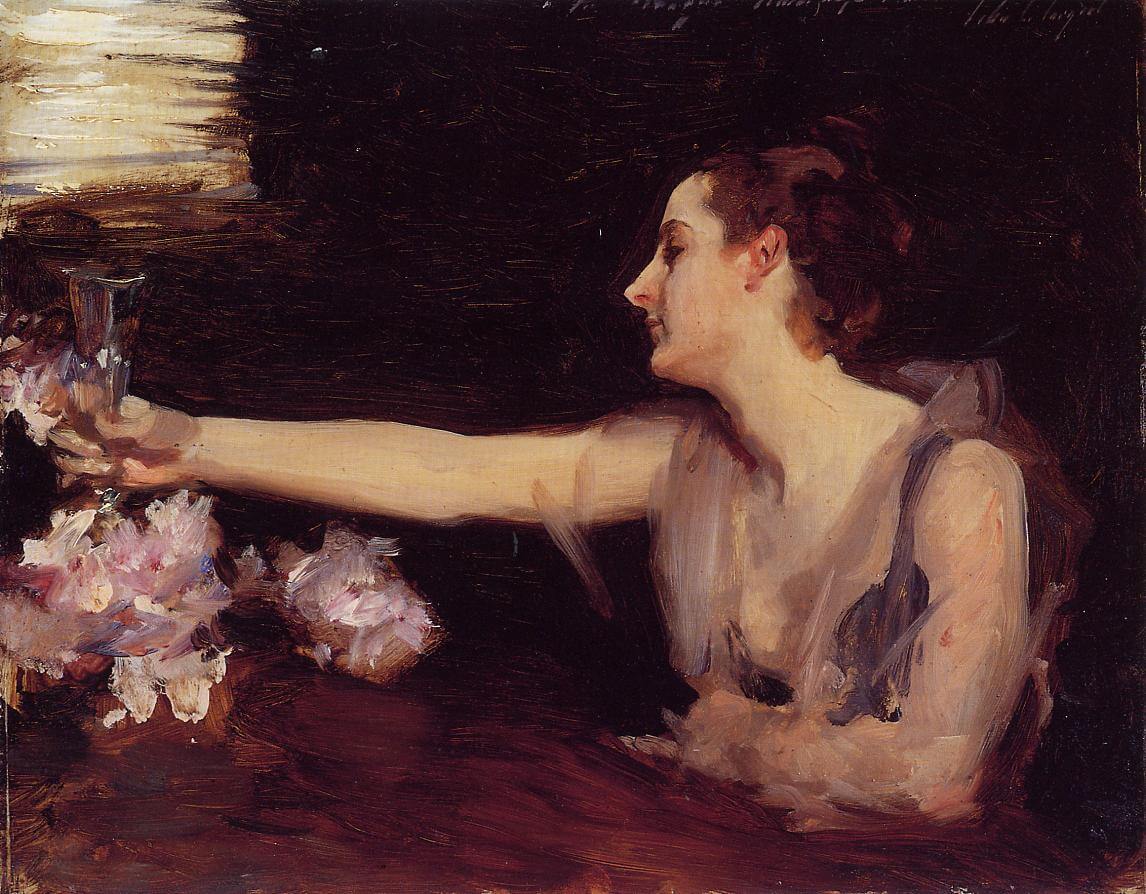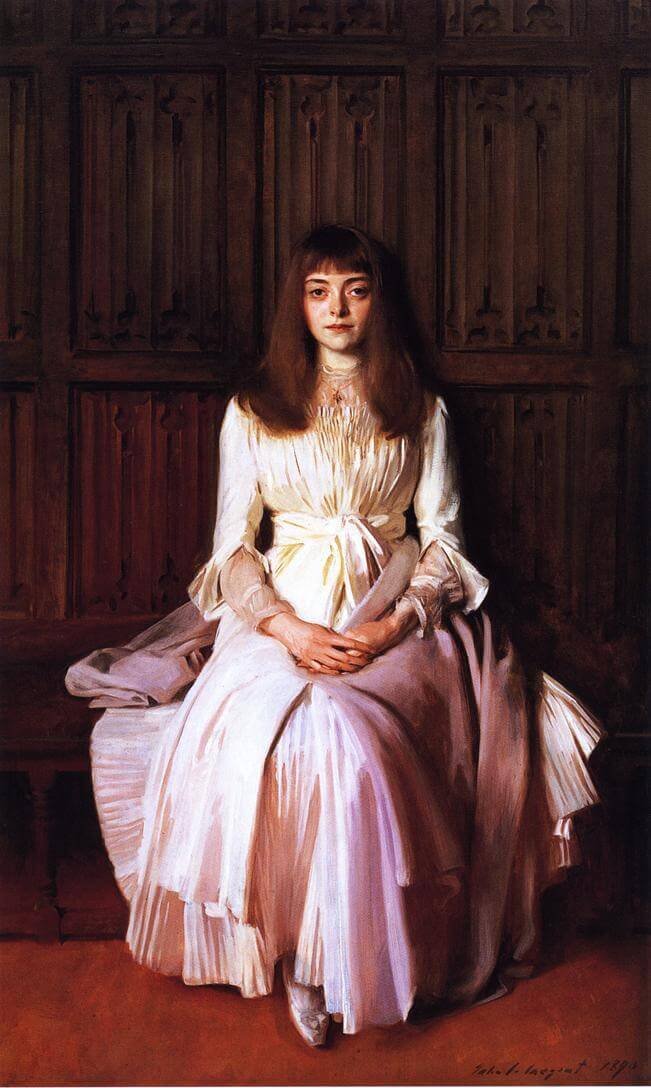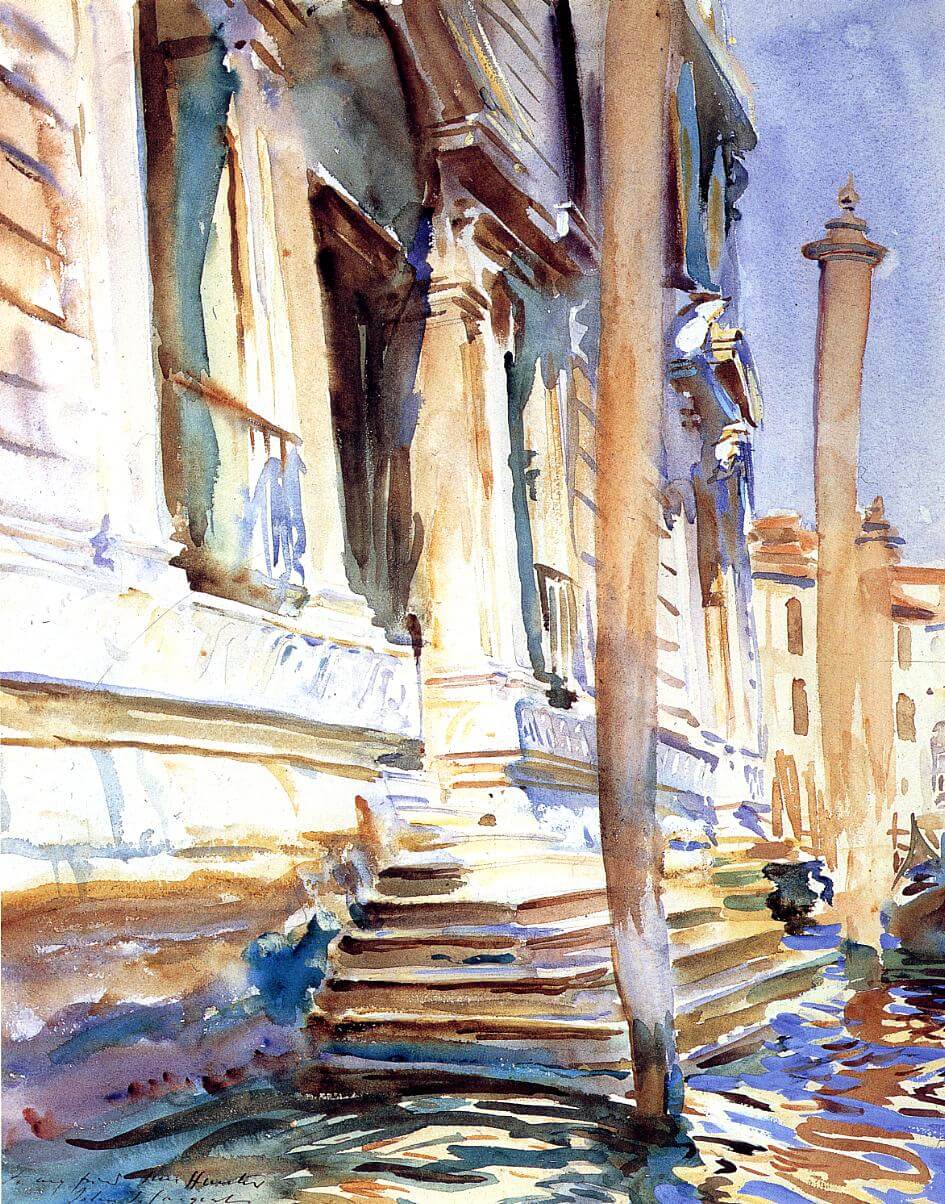I am so happy with the amazing response I’ve gotten to my post about The Daughters of Edward Darley Boit. So many people have commented here, on Facebook, and in my regular life. Since you guys seem to enjoy John Singer Sargent as much as I do, let’s talk about him a little more.

While reading Erica Hirshler’s book about the Boit painting, I was surprised to learn that not everyone loves Sargent’s work. I know that no artist is universally loved, but Sargent seems to invite particularly contradictory opinions. In his own day, people sometimes criticized him for being too experimental. They felt that his works were too sketchy or unfinished, and his compositional choices could be too far outside the norm. Some critics felt that Sargent could be too inventive for his own good. Sargent spent his career trying to balance being bold and inventive enough to garner attention with being conventional enough to receive portrait commissions. That’s a fine line to walk, and we all know that he sometimes strayed off it unknowingly, as he did with his famous Madame X.

In more recent years, Sargent has received the opposite criticism – that he was too traditional and conservative. Specifically, he has been accused of being superficial and emotionless. All fluff and no substance, I guess you could say. I really don’t understand this view. Like almost every other Sargent fan I know, I enjoy his portraits precisely because of his expressive qualities. It’s difficult to identify or describe exactly what I find so compelling, because it’s quite subtle. He was so skilled at portraying his sitters’ individuality and indicating that deep thoughts and feeling are going on behind their eyes. He never really let us in on any specific narrative; he just provided tantalizing suggestions. Sargent’s paintings seem to inspire a lot of imagination in people – probably more than any other artist except da Vinci and Vermeer. That’s no the mark of a superficial painter. I sometimes enjoy straightforward depictions of beautiful things, but they don’t effect me the way Sargent’s works do.

In addition to his portrait paintings, Sargent painted tons of watercolor sketches of scenes from Europe, America, and the Middle East. Many of them are now at the Museum of Fine Arts Boston and the Brooklyn Museum of Art in New York. What these scenic watercolors have in common with his portraits, I think, is that they show the world as interpreted through Sargent’s unique lens. I get the strong sense that everything Sargent put on a canvas or page was filtered through his, very painterly, own point of view first. And as befits a great artist, his interpretation is way more beautiful and interesting that the original thing itself.

So tell me, why does Sargent appeal to you? Or if he doesn’t, why not? I promise there will be no judgment. I just want to know.
Recommended Reading
- Davis, Deborah. Strapless: John Singer Sargent and the Fall of Madame X. New York: Jeremy P. Tarcher/Penguin, 2003.
- Hirshler, Erica E. Sargent’s Daughters: The Biography of a Painting. Boston: MFA Publications, 2009.
- Hirshler, Erica E. and Teresa A. Carbone. John Singer Sargent Watercolors. Boston: MFA Publications, 2013.
- Lucey, Donna M. Sargent’s Women: Four Lives Behind the Canvas. W. W. Norton & Company, 2017.
- Ormond, Richard & Elaine Kilmurray. Sargent: Portraits of Artists and Friends. New York: Skira Rizzoli, 2015.
You can also click on my John Singer Sargent tag to read more articles about him.

